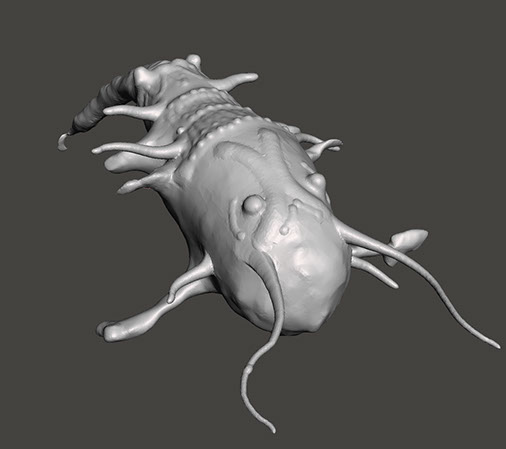Species: Oithona Setigera
Student: Fiona McMahon
Information:
Zooplankton are small organisms that drift along with currents and make up the planktonic food supply along with phytoplankton (“Plankton”). Almost all oceanic organisms are dependent on this supply. Zooplankton can be divided into two groups: temporary and permanent. Temporary plankton consist of eggs and larvae, and permanent plankton includes all animals that live their lives in a floating state. The temporary plankton is abundant in coastal areas, though variations in spawning allow its presence in all seasons. Representatives from nearly every phylum of the animal kingdom are found in the permanent plankton. Among the protozoans, planktonic foraminiferans and radiolarians are so abundant and widespread that their skeletons constitute the bulk of bottom sediments over wide ocean areas. They are absent in fresh water.
There is a pronounced tendency for zooplankton to perform daily vertical migrations in both fresh water lakes and the sea (“Plankton”). This migratory behavior varies with stages in the life cycle, seasons of the year, latitude, hydrographic structure, and meteorological conditions. Generally, the animals ascend toward the surface at sunset from daytime depths. At midnight, if there is no light, artificial or natural, like the moon, some animals return to the daytime depths and then approach the surface once again just before dawn. As the sun rises, all descend to their daytime level.
Crustaceans are the most important members of the zooplankton. They are the marine counterparts of insects on land; being the most diverse and numerous of all animal phyla. The Oithona setigera is a crustacean that was discovered by James Dwight Dana in 1852 (WoRMS). The Oithona setigera is part of the genus Oithona and the Oithonidae family. It comes from the Animalia kingdom.
